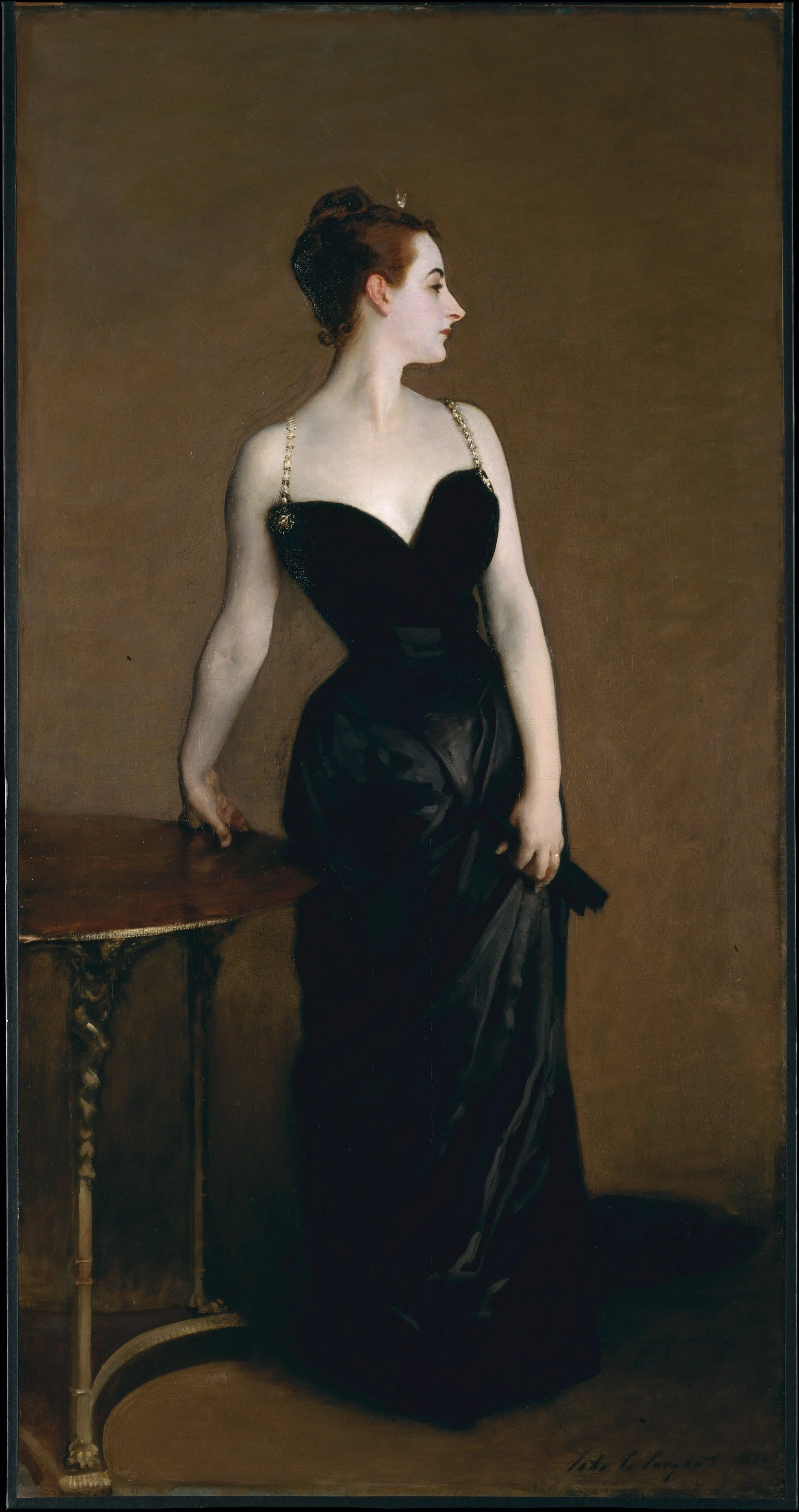Scandalously Brilliant: Sargent Returns to Paris
In the third season of the HBO television series The Gilded Age, which playfully imagines historic figures from late 19th-century New York society in conversation with fictional characters, the fake Bertha Russell, the formidable nouveau riche matriarch played by Carrie Coons, commissions the non-fictional character, the painter John Singer Sargent, to paint a full length portrait of her daughter Gladys. Gladys, dressed sumptuously, will be exhibited for all to see in a spectacular portrait that is to mark her entrance to New York society. For fans of the series, the ever conniving Bertha, reveals her own unfailing taste, when Sargent thanks her for magnanimously ‘overlooking’ the scandal of his early career in Paris, suggesting that she uniquely understands his talent.
Unbundling fact and fiction, visitors to the Dazzling Paris, John Singer Sargent 1874-1884 have a unique opportunity to discover the early career of one of the most significant portrait painters his the Gilded Age . Sargent arrived in Paris as an aspiring painter, he enrolled in the studio of the flamboyant Carolus Duran (1837-1917) whose successful portraits, notably the Lady with a Glove 1869, suggested a profitable career path for his students. Under Carolus Duran’s tutelage, Sargent learned to work directly with diluted paint on the canvas, notably experimenting with tonal values—adding white or black paint to brilliant hues of red, blue and yellow.
One of the most enticing reasons to visit this exhibition is to see up close Sargent’s bravura technique: his generous and fluid brushstrokes, his ability to evoke sumptuous textiles, powdery surfaces, and eye catching reflections—is delightful. It is indeed rare to appreciate his painting techniques in his portrait of Mrs. Henry White (Washington DC); Dr Pozzi at home (Los Angeles) and the Daughters of Edward Darley Boit (Boston) in the same venue.
Fluent in five languages, Sargent circulated in ex-patriot and diplomatic circles, where he found a clientele willing to encourage his career. Dr Samuel Jean Pozzi, a brilliant physician and pioneer of modern gynecology, which earned him the nick-named Doctor Love in Parisian society, persuaded Virginie Amélie Aveugo Gatreaux to pose for Sargent. Their collaboration was one of combined ambition, Sargent looking to create a modern Parisienne, inspired by Edouard Manet’s iconoclastic works, and Gateaux’s desire to promote her own image. The painting, now known as Madame X (Metropolitan Museum) was a success du scandal and it is the center of this exhibition. Visitors can enjoy looking at preliminary drawings and sketches, notably tracing how Sargent moved the strap of her dress from her arm to her shoulder; his evocation of glimmering rhinestones contrasted to her white skin and the plunging neckline of her heart shaped black dress. The painting remained in his studio—reviled by critics—until he sold it to the Metropolitan museum in 1916, when he admitted to the director that ‘it was the best thing I have ever done.” Surely Bertha Russell would have agreed, but visitors to the Musée D’Orsay this season have the chance to decide how Sargent’s Parisian scandal in fact determined his future career.
To full appreciate Sargent in context, combine your visit to th exhibition with our expert led tour of the Musée d’Orsay. Contact us at hello@picturesquevoyages.com





